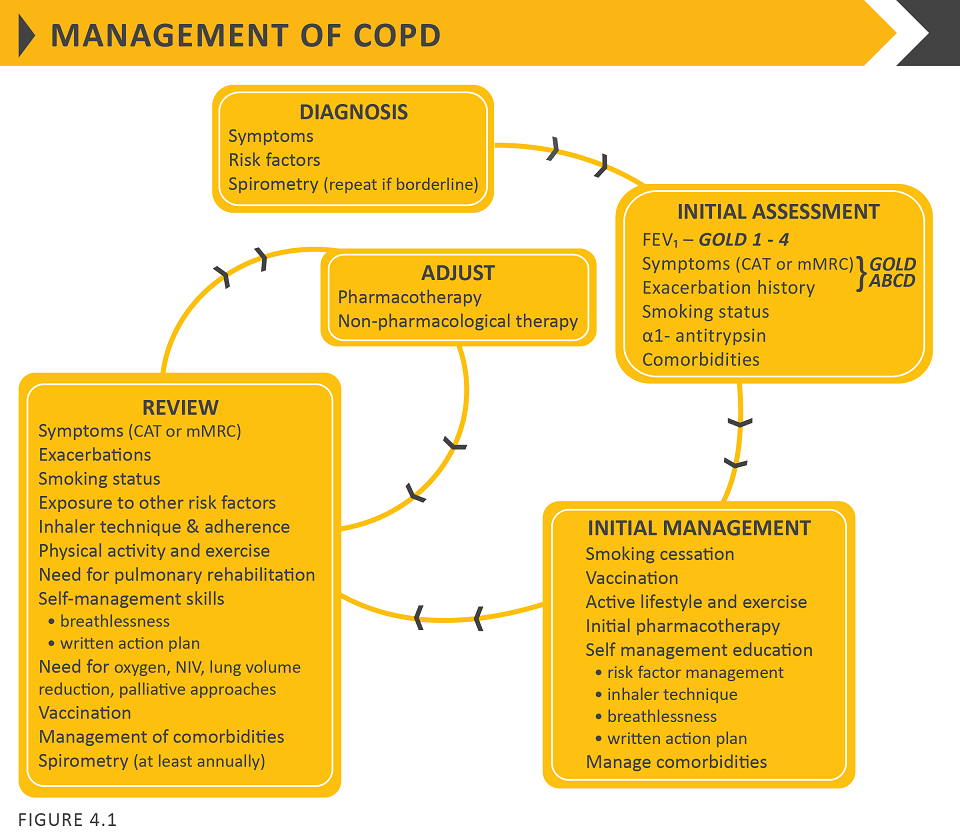management of stable COPD
Last edited 02/2021 and last reviewed 04/2021
- management strategy of stable COPD should be predominantly based on the assessment of symptoms and future risk of exacerbations
- all individuals who smoke should be strongly encouraged and supported to quit
- main treatment goals are reduction of symptoms and future risk of exacerbations
- management strategies include pharmacological and non-pharmacological interventions.

© 2020, Global Initiative for Chronic Obstructive Lung Disease, available from www.goldcopd.org, published in Fontana, WI, USA.
Notes:
- a major differential diagnosis is asthma. In some patients with chronic asthma, a clear distinction from COPD is not possible using current imaging and physiological testing techniques. In these patients, current management is similar to that of asthma
- Alpha-1 antitrypsin deficiency (AATD) screening:
- the World Health Organization recommends that all patients with a diagnosis of COPD should be screened once especially in areas with high AATD prevalence
- a low concentration (< 20% normal) is highly suggestive of homozygous deficiency
- family members should also be screened
Reference:
non-pharmacological management
inhaler devices for topical airway treatment in asthma
oxygen therapy in chronic obstructive pulmonary disease (COPD)
follow-up of COPD in primary care
palliative care in end-stage COPD
NICE guidance - management of stable COPD
GOLD recommendations on managing stable COPD
treatment settings in COPD exacerbations
Global Initiative for Chronic Obstructive Lung Disease (GOLD) criteria